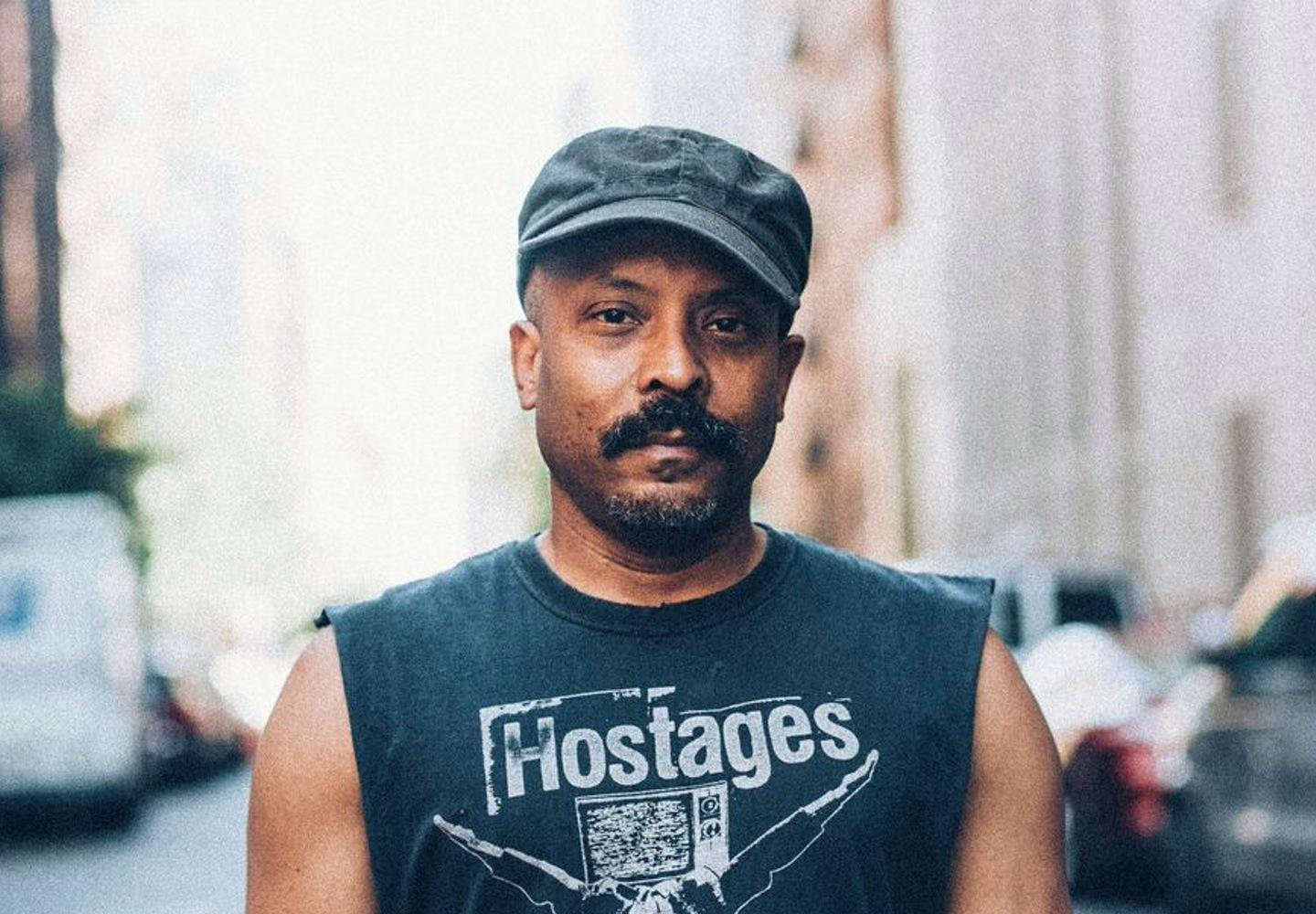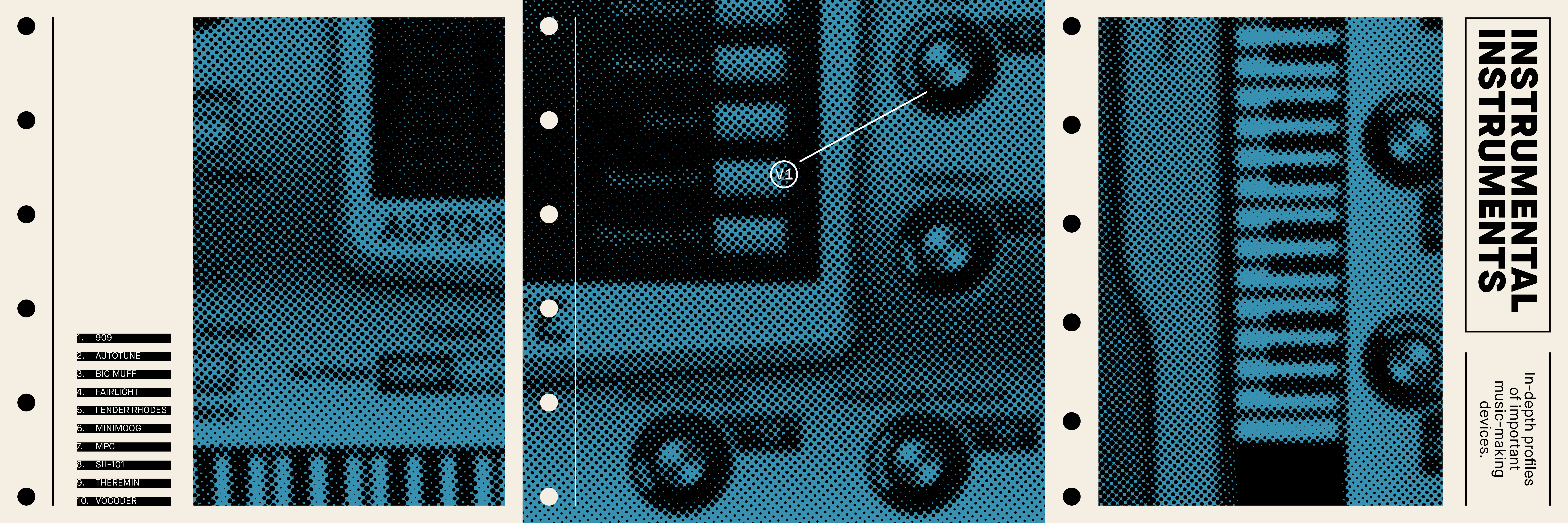Kindness Meets Eric Johnson, Esteemed Photographer of Musical Icons
Stories of Lauryn Hill, Notorious B.I.G., Maxwell and the late, great Aaliyah passing through the New Yorker’s lens
Raised in New Jersey, photographer Eric Johnson moved to New York City in the late ’80s and quickly began to document the city’s cultural fabric. Though his work has been incredibly varied, it’s his snaps of musicians that have often garnered the most attention – Lil Wayne, Lady Gaga, Aaliyah, Rihanna, Lauryn Hill, Notorious B.I.G. and Missy Elliott are just a few of the stars he’s shot over the years. At the same time, Johnson’s lens spends just as much time documenting younger acts, with a particular emphasis on queer artists and people of color, including Le1f, Cakes Da Killa, Juliana Huxtable and Honey Dijon, to name just a few. There’s a raw aesthetic to his photography, to be sure, but his unique vision also pulls from hip-hop, high fashion, drag culture and more. In this interview excerpt from Kindness’s recurring show on RBMA Radio, the photographer discusses stories of some key shots from his extensive career behind the camera.
Lauryn Hill
Tell me about shooting the cover of The Miseducation of Lauryn Hill.
Lauryn I was really psyched about, because everybody knew that this was going to be the project, you know? Everyone wanted to be attached to it.
I ran into her A&R guy at a party or something, and he was like, “What have you been up to?” I was like, “I’ve been up to this, that, blah blah blah.” He was like “I’m working on Lauryn.”
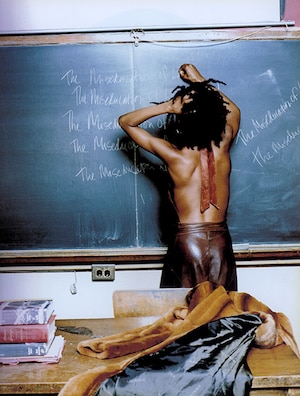
I was like “Yeah, I heard you guys got someone for that,” and he was like, “No, we have not. We have not chosen someone.” He was like, “I’ll speak to them.”
The record label hit me up, and there was three people that they were considering. I think it’s Melodie McDaniel and Peter Lindbergh. I felt like the smallest person in that trio of people, but I was psyched about it. I end up getting to speak to her on the phone, because she wants to speak to everyone. Actually, I think that the other photographers were so big that they probably was being elusive, so I was the first one that she could get on the phone.
We got on the phone, and she was like, “Okay, this sounds cool, this clicks.” Then at the end I was like, “Hey, you know what? I think that you also know my mom.” She was like, “Miss Shirley’s your mom?” I was like, “Yeah.” She was like “Oh my God. This is fate. This is fate.”
She know my mom because in Newark my mom had a beauty salon, and my mom used to do her hair. She would come by even after she was successful and come visit and say hi to my mom and different people. Somehow, I missed all of that. I didn’t really know about it, and my mom told me that when I was up for the project.

That was fate, so the record company was like, “Fuck, you should have told us that in the beginning!” I wasn’t really using it to get it, but since she said already I was the one, I kind of just threw that out there, because that was the truth. Her mom came to the shoot and my mom came to the shoot in the beginning. They just all hung out for a little bit.
Where was this shoot?
She was very specific about her ideas and wanting to shoot in school and everything, so we went to scout schools. Me and the art director Erwin [Gorostiza] went to a bunch of different schools, but something was like, “Oh, we should just go to her school.” We went to her school at the end. East Orange or West Orange, somewhere in New Jersey, and it ended up working out perfectly. We shot at the school that she attended.
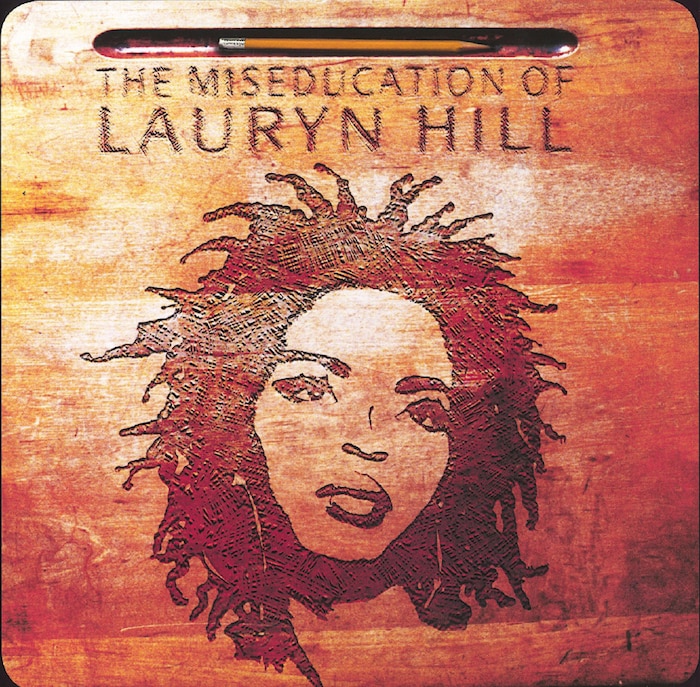
The image that became the cover, that’s kind of inscribed on the desk, that was a photo?
Yes. The art director was like, “How do you feel about this happening to your photo?” It’s cool, as long as it looks cool. I guess they didn’t know if I would think that. I thought that was an iconic image, and it turned out to be really effective.
Notorious B.I.G.
I wanted to come to this Notorious B.I.G. sleeve as well. The fact that you got him smiling – was that an outtake from the shoot?
Totally. That was an outtake from the shoot that we’d done for Vibe, and Biggie had died already, so the record label called me up about seeing the film. We sent a bunch of selects and then ended up using that one. His mom was so happy because she said that was the only picture of him smiling, or something like that. That was cool.
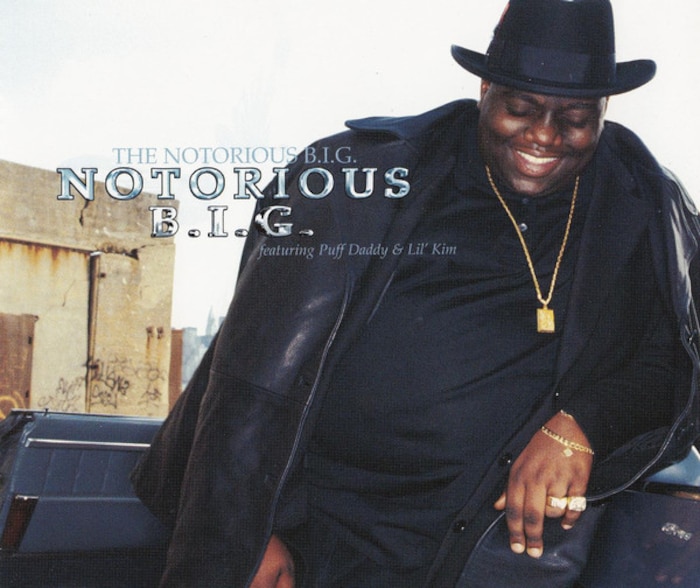
Could you talk about that Vibe cover image? Because I think people know it. How did that go down?
I started working for Vibe pretty early on. You start seeing your photo get bigger and bigger. First, it’s like, to be in the magazine, and then it’s like your photo’s a full page, then double pages. The photo editor, George Pitts, was like, “You know, everyone’s noticing you. Your work’s doing really great.” I moved up from features to actually getting the call for the actual magazine cover.
I went into the office. They showed me a couple of Rolling Stone covers and things that they thought were pretty iconic, and they were like, “We just want to do something that’s really iconic.” They kind of just left it on me, so I went and location-scouted. I found that car through those places that rent classic cars and went to them with the idea.

Biggie was like, “This is where they dump the dead bodies. This is where they dump the dead bodies.” He really kept on about that, you know? Because of the location. Everyone else is scrambling around getting work done, but he was really obsessed with that idea.
Maxwell
Not only did you shoot the most recent Maxwell sleeve, you shot the very first Maxwell sleeve.
Yes. I shot the very first Maxwell sleeve and I directed his very first music video for “Til The Cops Come Knockin’.”
I have all these kids around that I notice I kind of want to take photos of. Apparently I met Maxwell the same way. He was a teenager in the city and I was like “Yo, man, you have a cool look. You should let me take your photo.” That’s kind of how we got started and we used to hang out.

I was really a nerd about imagery and album covers, so I would take him to bookstores and we’d go through books for hours of, let’s say, the hundred greatest album covers of all time and things like that. I’d just always be like, “Dude, from the very first image, it’s got to be sick. Your very first image,” and somehow we were able to pull off that thing with this. We were able to pull it off, so I did. The only album I didn’t do was the second album that Mario Sorrenti shot, which I thought was a great cover as well. Since then we’ve been doing our thing for over twenty years now.
New Generations in New York
You explained that concept of the studio as a place that people could hang out that maybe reflected an earlier era in New York history, where there were these spaces of sanctuary and self-expression and where anything goes. That lawlessness that the city used to represent, but it doesn’t so much anymore.
Totally. I was telling you how I felt in my place. I feel very connected to New York. When I go outside, I have to face harsh realities, but in my place we are like old school New York in that sense. I was even talking to Le1f and he was like, “Every time I go to your place, I meet someone.” I was like, “Huh. That’s cool.” I feel like that’s part of the attraction when we have things that cross paths, and me just being a super curious person. I like to mix people from different cultures, as well. There’s that scene, but then it’s a lot of random people that I have different relationships with that I’ll have over and it’ll just be that cross.

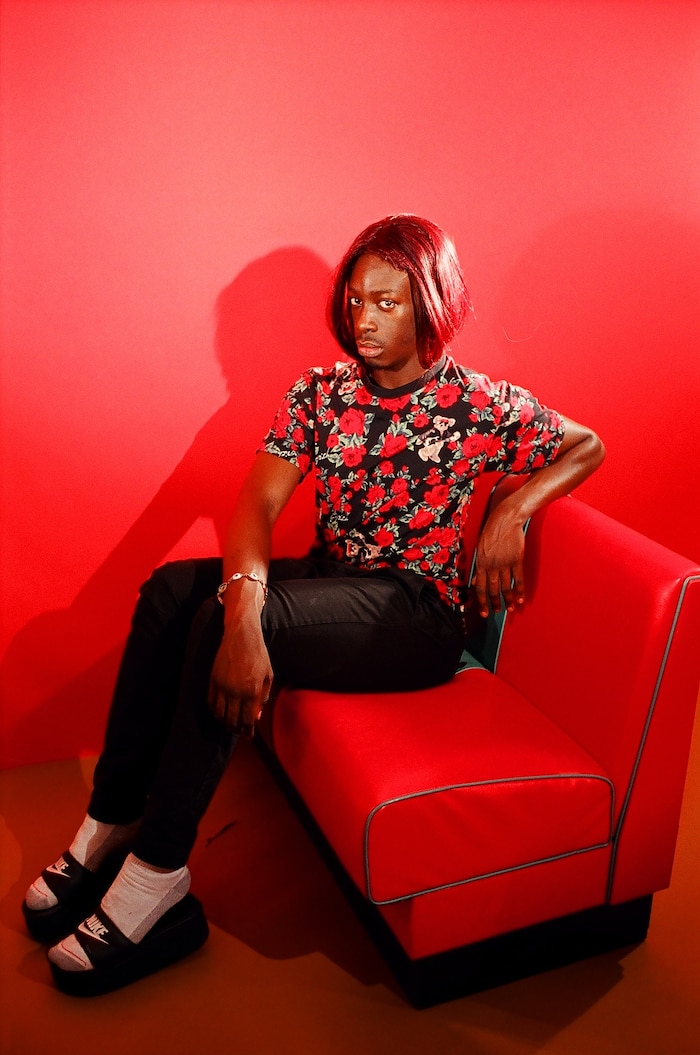
You have worked on books of your portraits. Your photography obviously extends beyond just being sleeve and magazine photography. You have your studio, and as people come through for these parties and hang outs, you’ll be taking their picture.
Yeah. I shoot a lot of pictures, spontaneous pictures at parties and things, but mostly, I usually exchange info with kids and they come back and we do a proper session.

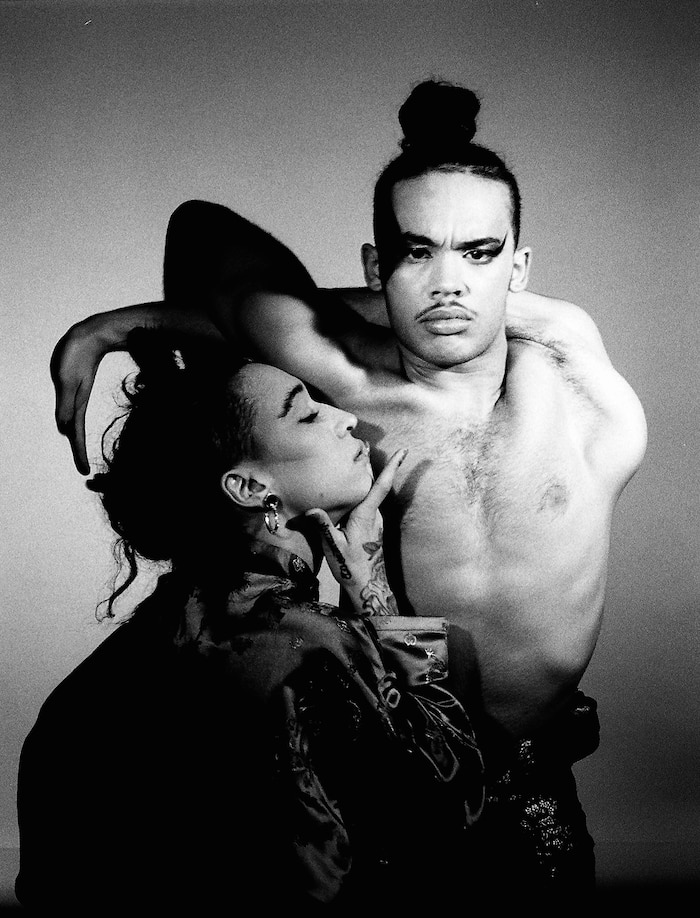

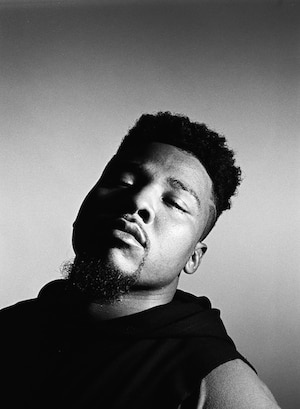
I think your photography and also the space that you have is offering a space for people from, I guess, more non-conformist, alternate lifestyles. That’s something that you saw reflected in the Club Kid culture in the ’80s and ’90s. Do you have a sense of optimism about New York and where it’s going? Is it still somewhere that kids from across America can come and feel more at home, feel like they can express themselves? Are things changing?
Clearly, things are changing in the fact that it’s so expensive. Short of that, I feel optimistic because the fact that there’s so many fun kids that I just find amusing and I think are super talented. Sometime I’ll look around and there’ll be J Boogie and Le1f and Cakes and everyone all in the same space and I’m like, “Something has to be happening in New York for this many talented kids to be all here at one time,” with similar but different stories to tell, as well. I feel like as tricky as it can be in one sense, there’s definitely something happening that I’m pretty excited about.
Aaliyah
This show broadcast is falling on a sad day, an anniversary of her death.
Aaliyah was great. I feel like that day I was hungover, because I partied with my friend from Berlin, and maybe I got there three minutes late, at the most. She was already there. She was with her mom, her hair and makeup, everyone was there.
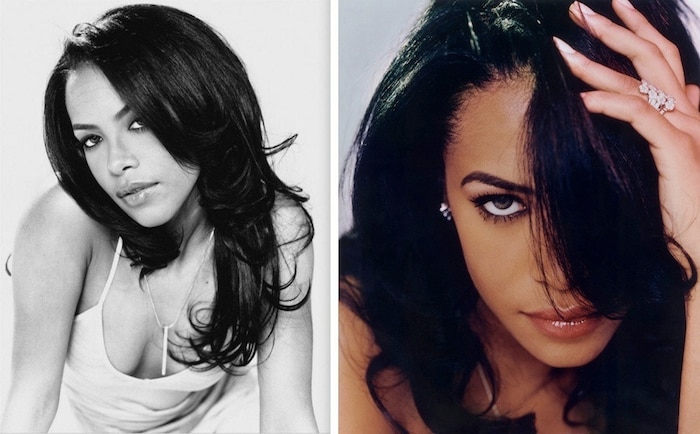
We shot at Pier 59 Studios over on the West Side Highway. I had never met her before, but in a way I kind of feel like those photos that I shot of Aaliyah are not exactly like all of my other photos. I feel like I often add a bit of raw edge to the images sometimes, and they look a little bit more spontaneous. I feel like there was something about Aaliyah that made me feel very respectful and follow her lead. That’s why I feel those photos are a lot more beauty-type photos than my style usually is, because I just followed her lead and that’s what she gave me: a professional beautiful woman. The fact that they’d be so popular compared to other photos I feel like are more “me,” I think it’s kind of interesting, and a lot that I give to her, put on her.
After the shoot she hit me up about getting the photos. She wanted to see the photos. I think she felt really excited about them, so I have these contact sheets with all these x’s and o’s on them, images that probably still have fingerprints on the back.
